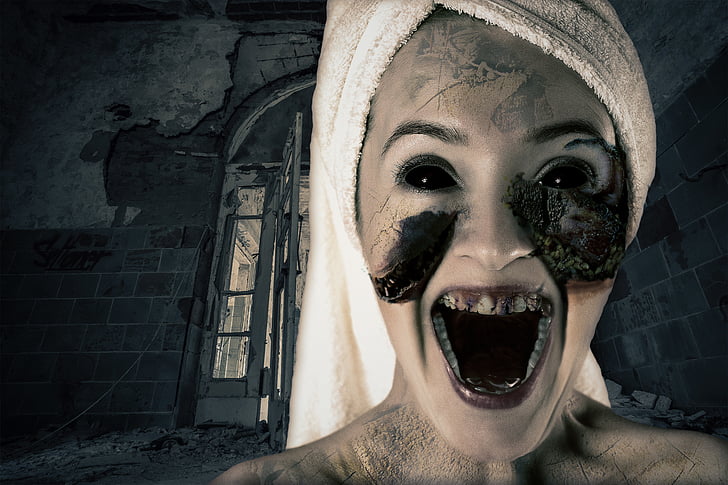Uncovering the Enigmatic World of Poltergeists: Three Famous Cases Explored
Introduction
Chairs moving by themselves, loud unexplained bangs, and disappearing objects—these are just a few signs of a poltergeist haunting. Derived from the German term for “noisy ghost,” a poltergeist refers to phenomena usually attributed to mischievous spirits or ghosts characterized by psychokinesis or other physical manifestations. Poltergeist incidents, often centered around a living “agent,” have been recorded throughout history. In this article, we delve into three famous 20th-century poltergeist cases that captured the world’s attention: the Thornton Heath Poltergeist, the Enfield Poltergeist, and the Danny Poltergeist.
The Thornton Heath Poltergeist
The Initial Incident
In the 1970s, a family in Thornton Heath, England, experienced a series of disturbing events that began one August night. They were abruptly woken by a blaring radio tuned to a foreign-language station, though no one had turned it on. This eerie event marked the beginning of a four-year ordeal.
Escalation of Phenomena
The strange occurrences escalated quickly:
- A lampshade repeatedly knocked over by unseen forces.
- A Christmas ornament hurled across the room, striking the husband.
- The Christmas tree shaking violently.
- Footsteps heard in empty rooms.
During one gathering, a loud knocking at the front door was followed by the living room door flinging open and all the house lights turning on. Even a house blessing failed to stop the chaos.
The Haunting by Chatterton
A medium identified the spirit as a farmer named Chatterton, who had lived there in the 18th century. The family reported seeing:
- Chatterton on their TV screen.
- An elderly gray-haired woman in old-fashioned attire following them.
Conclusion
When the family finally moved out, the poltergeist activity ceased, and subsequent residents reported no disturbances.
The Enfield Poltergeist Case
Beginning of the Haunting
In 1977, in Enfield, North London, Peggy Harper and her children began experiencing bizarre phenomena. It all started one August night when Janet, aged 11, and her brother Pete, aged 10, felt their beds shaking. Peggy dismissed it initially, but things quickly escalated.
The Haunting Intensifies
Witnesses, including neighbors and police officers, observed:
- Heavy furniture moving on its own.
- Lego bricks and marbles flying through the air.
- Objects hot to the touch.
- Mysterious puddles of water.
The Investigation
Maurice Grosse and Guy Lyon Playfair of the Society for Psychical Research investigated the case. They documented:
- Objects flying across rooms.
- Bedclothes being pulled off.
- Fires starting and extinguishing mysteriously.
The Voice of Bill
The haunting took a chilling turn when Janet began speaking in a deep voice, claiming to be a man named Bill who had died in the house. This claim was later verified. Despite extensive documentation, skeptics argue that the phenomena were the result of Janet’s clever tricks.
The Danny Poltergeist Case
The Haunting Begins
In 1998, Al Cobb of Savannah, Georgia, bought an antique bed for his son Jason, sparking a series of strange events. Jason felt cold air and saw objects moving on their own. The family began finding notes signed by “Danny, 7.”
Communication with Danny
Using paper and crayons, Al Cobb communicated with Danny, who claimed his mother died in that bed in 1899. Danny expressed a desire to stay with the bed and objected to anyone else sleeping in it.
Paranormal Activity
The activity included:
- Objects flying across the room.
- Furniture moving.
- Kitchen drawers opening.
- Dining room table being set by unseen hands.
Paranormal Investigation
Parapsychologist Andrew Nichols investigated, suggesting that Jason’s proximity to an electromagnetic field charged his latent psychic abilities, causing the phenomena.
Summary
Poltergeist cases like Thornton Heath, Enfield, and Danny captivate our imaginations with their blend of the inexplicable and the eerie. Whether you believe in mischievous spirits or see these events as psychological phenomena, these stories remind us of the mysteries that still elude our understanding.
FAQs
What is a poltergeist?
A poltergeist, meaning “noisy ghost” in German, refers to supernatural phenomena involving objects moving, noises, and other physical disturbances, often linked to a specific person.
How do poltergeists differ from ghosts?
Poltergeists are known for physical disturbances, while ghosts are typically seen as apparitions. Poltergeist activity is often connected to living individuals, whereas ghost sightings usually involve the dead.
Can poltergeists cause harm?
While poltergeist activity can be unsettling and occasionally results in minor injuries from flying objects, there is little evidence of severe harm.
Are poltergeist cases scientifically explainable?
Some researchers believe poltergeist phenomena can be explained by psychological or environmental factors, such as stress or electromagnetic fields, but no definitive scientific explanation exists.
How can one deal with a poltergeist?
Dealing with a poltergeist often involves psychological support for the affected individuals, spiritual interventions like blessings, or sometimes simply moving away from the location.

